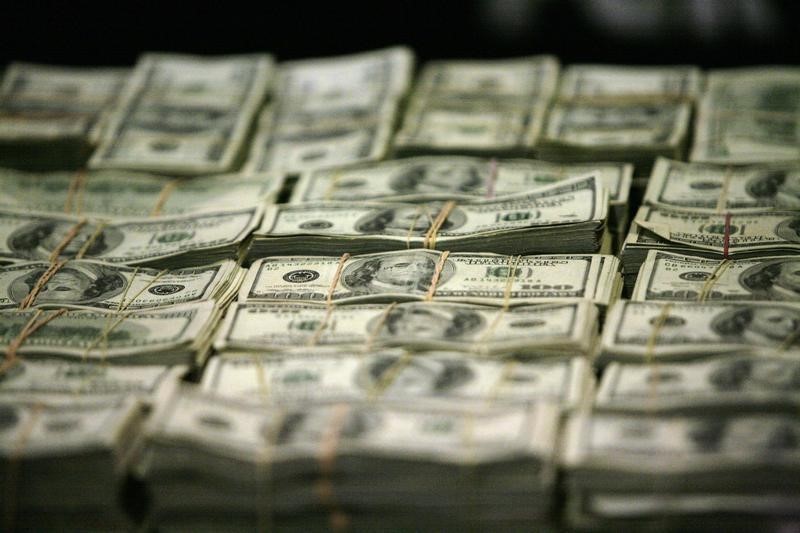Investing.com - The dollar extended gains against the other major currencies on Thursday, after the release of upbeat U.S. jobless claims data added to optimism sparked by the Federal Reserve's decision to raise interest rates for the first time in nearly a decade.
USD/JPY rose 0.22% to 122.47.
The U.S. Department of Labor said the number of individuals filing for initial jobless benefits in the week ending December 11 decreased by 11,000 to 271,000 from the previous week’s total of 282,000. Analysts expected jobless claims to fall by 7,000 to 275,000 last week.
Separately, the Federal Reserve Bank of Philadelphia said that its manufacturing index deteriorated to -5.9 this month from November's reading of 1.9. Analysts had expected the index to dip to 1.5 in December.
The reports came a day after the Fed raised interest rates by a quarter of a percentage point to between 0.25% and 0.50% at the conclusion of its two-day policy meeting. It was the first rate hike in the U.S. since 2006.
Commenting on the decision, Fed Chair Janet Yellen said that further rate hikes would be gradual and data dependent.
EUR/USD dropped 0.65% to 1.0839.
The German research institute Ifo earlier reported that its Business Climate Index fell to 108.7 this month from a reading of 109.0 in November, below forecasts for 109.0.
Elsewhere, the dollar was higher against the pound and the Swiss franc, with GBP/USD down 0.55% at 1.4916 and with USD/CHF climbing 0.68% to 0.9969.
The pound trimmed some losses after the U.K. Office for National Statistics reported that retail sales increased by 1.7% last month, blowing past forecasts for a gain of 0.5%. Retail sales in October fell by 0.5%, whose figure was revised from a previously reported decline of 0.6%.
Year-on-year, retail sales rose at a rate of 5.0% in November, easily surpassing expectations for a 3.0% gain, after rising at a rate of 4.2% a month earlier.
Core retail sales, which exclude automobile sales, jumped by 1.7% last month, above forecasts for a 0.6% increase and following a decline of 0.8% in September.
The Australian and New Zealand dollars were weaker, with AUD/USD down 0.66% at 0.7180 and with NZD/USD declining 0.82% to 0.6741.
Meanwhile, USD/CAD gained 0.38% to trade at 1.3837, just below the previous session's more than 11-year peak of 1.3848.
The U.S. dollar index, which measures the greenback’s strength against a trade-weighted basket of six major currencies, was up 0.60% at 98.99, the highest level since December 3.
